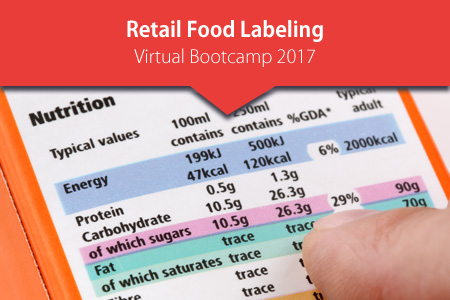On May 20, 2016, the Food and Drug Administration (FDA) announced the final food labeling regulations for serving sizes and nutrition labeling. These final regulations were published in the Federal Register on May 27, 2016. However, January 1, 2020, has been set as the uniform compliance date by the FDA for new or amended food labeling regulations issued between January 1, 2017, and December 31, 2018. Using a uniform compliance date allows to have an economical and orderly industry adjustment to the new labeling requirements by providing sufficient lead time to plan for using existing label inventories and for developing new labeling materials.
Highlights of the Final Nutrition Facts Label
FDA has made a few changes to the proposed rule. Some of the changes include:
- Refreshed Design Features
The look of the “Nutrition Facts” label remains unchanged; however, important updates have been made to ensure that consumers have access to the information that is required to decide what they eat. The changes include increasing the type size for “Servings per container,” “Serving size,” and “Calories,” declaration, and also bolding the serving size and the number of calories declaration to highlight the information.
Manufactures should declare the actual amounts, in addition to percent Daily Value of calcium, vitamin D, potassium, and iron, must be declared by the manufactures. The gram amounts for other vitamins and minerals can also be declared voluntarily.
The footnote has been updated to explain what percent Daily Value means. The updated footnote will read: “*The % Daily Value tells you how much a nutrient in a serving of food contributes to a daily diet. 2,000 calories a day is used for general nutrition advice.”
- Updated Nutrition Science Information
The Final Rule makes it necessary to include the information regarding “Added sugars,” in grams and as percent Daily Value, on the label. The list of required or permitted nutrients, which need to be declared, is being updated. Potassium and Vitamin D will be required on the label. Iron and Calcium will continue to be required on the label. However, Vitamins A and C are no longer required to be declared on the label, but can be included voluntarily.
Information about the “Total Fat,” “Saturated Fat,” and “Trans Fat” amounts continue to be required on the label. However, “Calories from Fat” will be removed. Additionally, the daily values for nutrients like vitamin D, sodium, and dietary fiber are being updated.
- Updated Serving Sizes
As per the law, serving sizes should be based on the amount of food and beverages that people actually eat, and not what they should eat. What people eat is affected by package size. Therefore, for a one or two servings packages, calories and other nutrients should be labeled as “One Serving” because people mostly consume it in one sitting.
However, for products, which are larger than a single serving but can be consumed in a single or multiple sittings, manufacturers must provide “dual column” labels indicating the amount of calories and nutrients on a “per serving” and “per package”/“per unit” basis. Dual-column labels will help people to understand how many calories and nutrients they will get if they consume the entire package/unit at once.
The final rule is extensive and is bound to virtually affect every conventional food product and dietary supplements present in the market. For more insights on food labeling regulations and the resources available for you within the government websites, join the 2017 Virtual Bootcamp by food safety expert Natasha Rowley-Phipps. Natasha has more than 18 years of experience in food quality, nutrition labeling, manufacturing and research. Natasha will break down the complex regulations into manageable pieces of information and will discuss every aspect of the regulations, from the required to the optional requirements. This bootcamp will be a helpful foundation for people who are beginning to tackle this subject as well as provide a review for those who need to freshen their knowledge.


